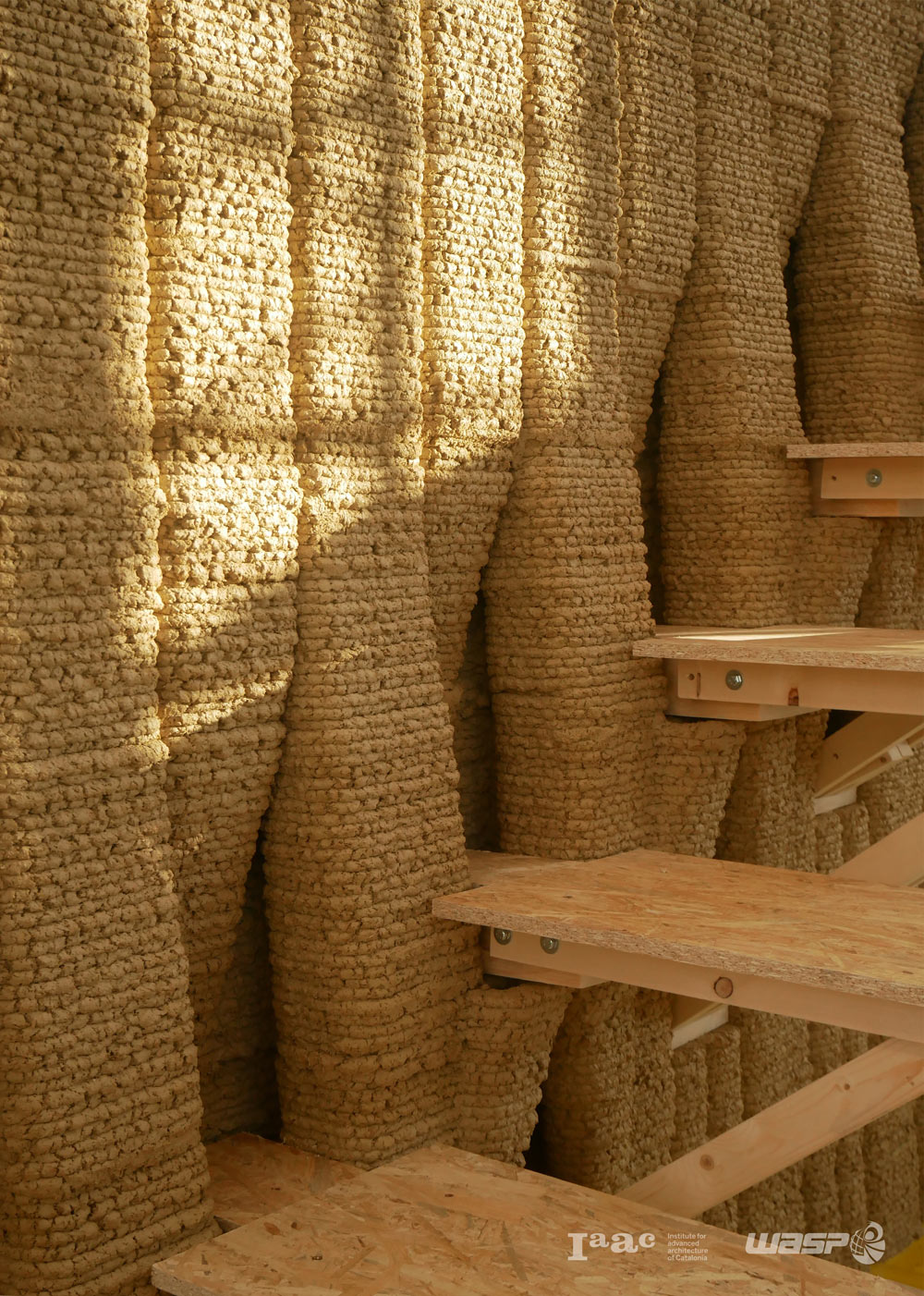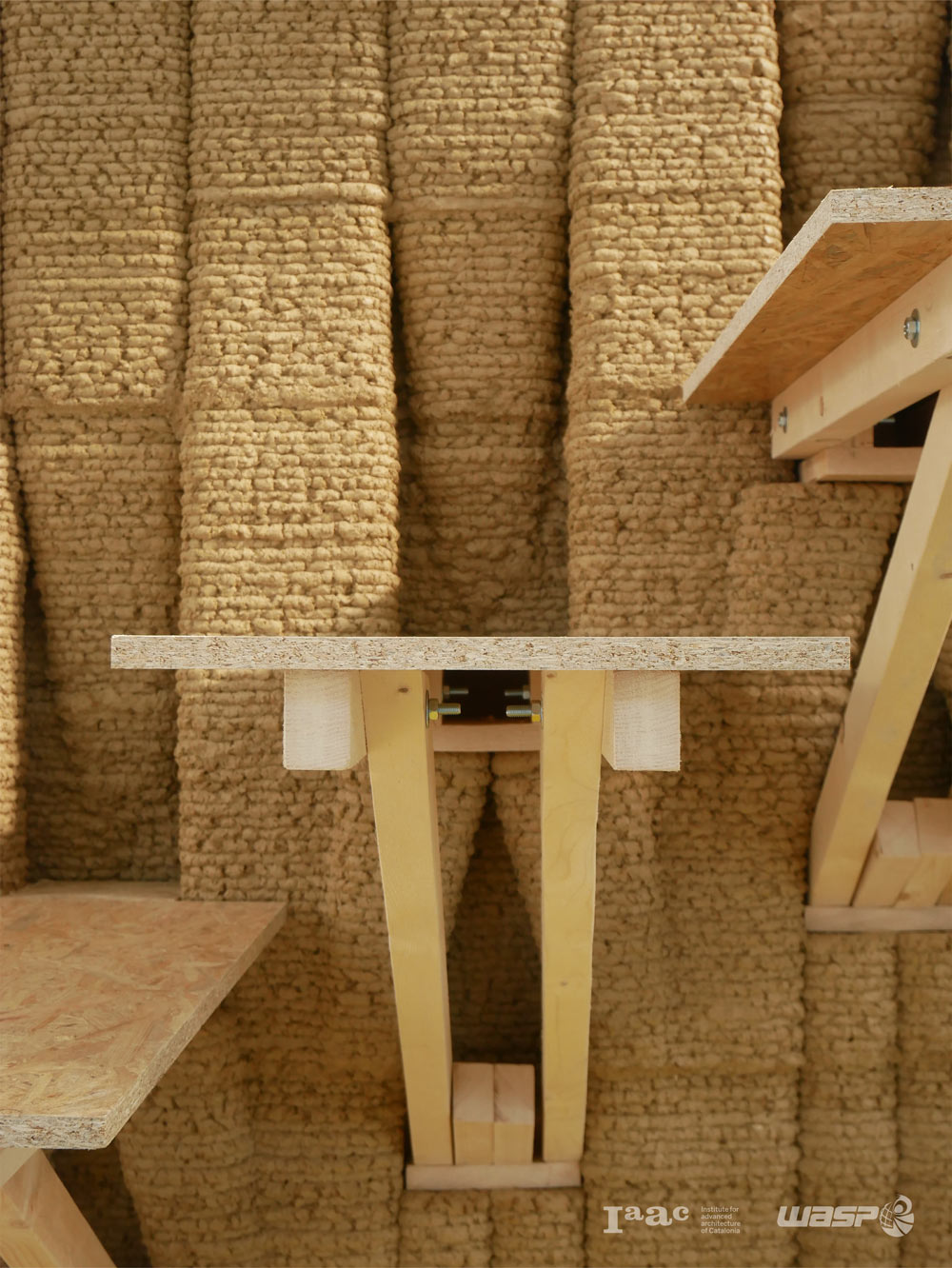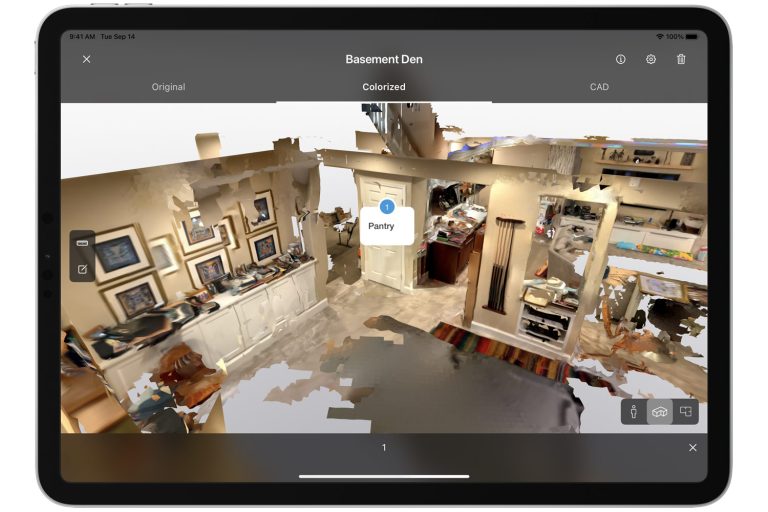IAAC and WASP Develop New 3D Printing Strategies Towards The Realization of Load-bearing Earthen Structures

IAAC and WASP present an innovative prototype of a 3D printed wall designed and engineered by IAAC and realised by Crane WASP within the Open Thesis Fabrication research (OTF), a programme of the Institute for Advanced Architecture of Catalonia (IAAC) focused on additive manufacturing in the field of construction.

This wall continues the research already undertaken in the cases-study Digital Adobe Wall (IAAC) and Gaia (WASP) , the 3D printed earthen house, enhancing the design opportunities of on-site 3D printing towards the achievement of multi-purpose architectural systems, able to promote the development of new construction scenarios.

WASP and IAAC have set their focus on a collaboration that results in proposing an architectural solution for affordable sustainable housing for and partially built by the people. Thanks to international networks with universities of architectural design, WASP gives the possibility to use the company labs and technologies, taking part in the current architecture lines of research.

At IAAC, an institute that explores the future of architecture and construction, students and researchers develop projects that aim to propose urban, architectural and construction solutions arising from the use of new technologies and, in turn, incorporates computer design and analysis to provide innovative solutions for a more sustainable habitat and city.


The 3D printing technology is progressively considered a viable construction strategy because of the advancement in design methods refined by educational programmes. In this line, IAAC’s Open Thesis Fabrication programme train researchers and practitioners on computational design, material engineering and robotic fabrication to foster new design opportunities on bioclimatic architecture.

About the prototype
The prototype 1:1 represents a wall portion 40 cm thick, with timber elements interlocked, providing support for stairs and floor structures, accurately designed for being anchored to the printed part. This work can be considered a first significant step towards the realization of load-bearing earthen structures. Indeed, the wall has been realized employing a mixture of clay and rice fibres, provided by RiceHouse for this specific purpose.

The printing process took 40 hours, with an overall material amount of 2 cubic meters, by modelling internally multiple surfaces able to confer both solidity and aesthetic expressivity. In light of results obtained with Gaia and this project, Crane WASP becomes an increasingly useful tool for transferring design logic into real construction models, easily allowing the experimentation of innovative architectural systems and promoting the progress of 3D printing in the construction industry.

WASP, the italian leading company in 3D printers’ manufacturing, aware of the substantial role of additive manufacturing, will develop new machines, ever more close to users as well to the needs of innovation for all application sizes, encouraging the digital shift also in building industry.

About the Collaboration
With this collaboration, WASP and IAAC underpin a strategic programme of shared projects, research and ongoing activities aimed at establishing 3D printing on-site solutions for affordable and sustainable housing, with the ultimate mission of consolidating a network of partners across all sectors, from architectural design to university research, from humanitarian associations to international organisations such as already done by IAAC and UN Habitat.
Via > 3dwasp.com



















































